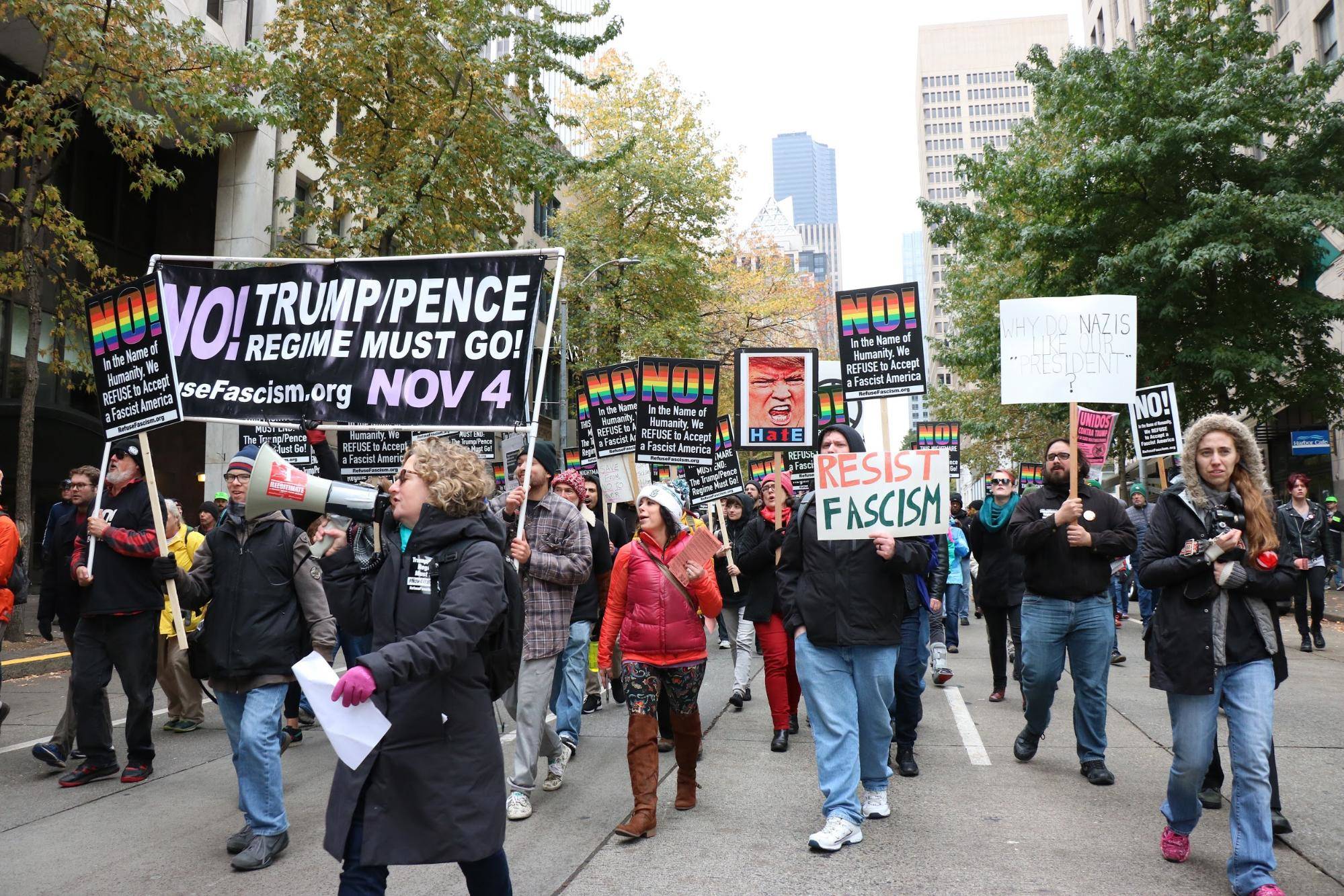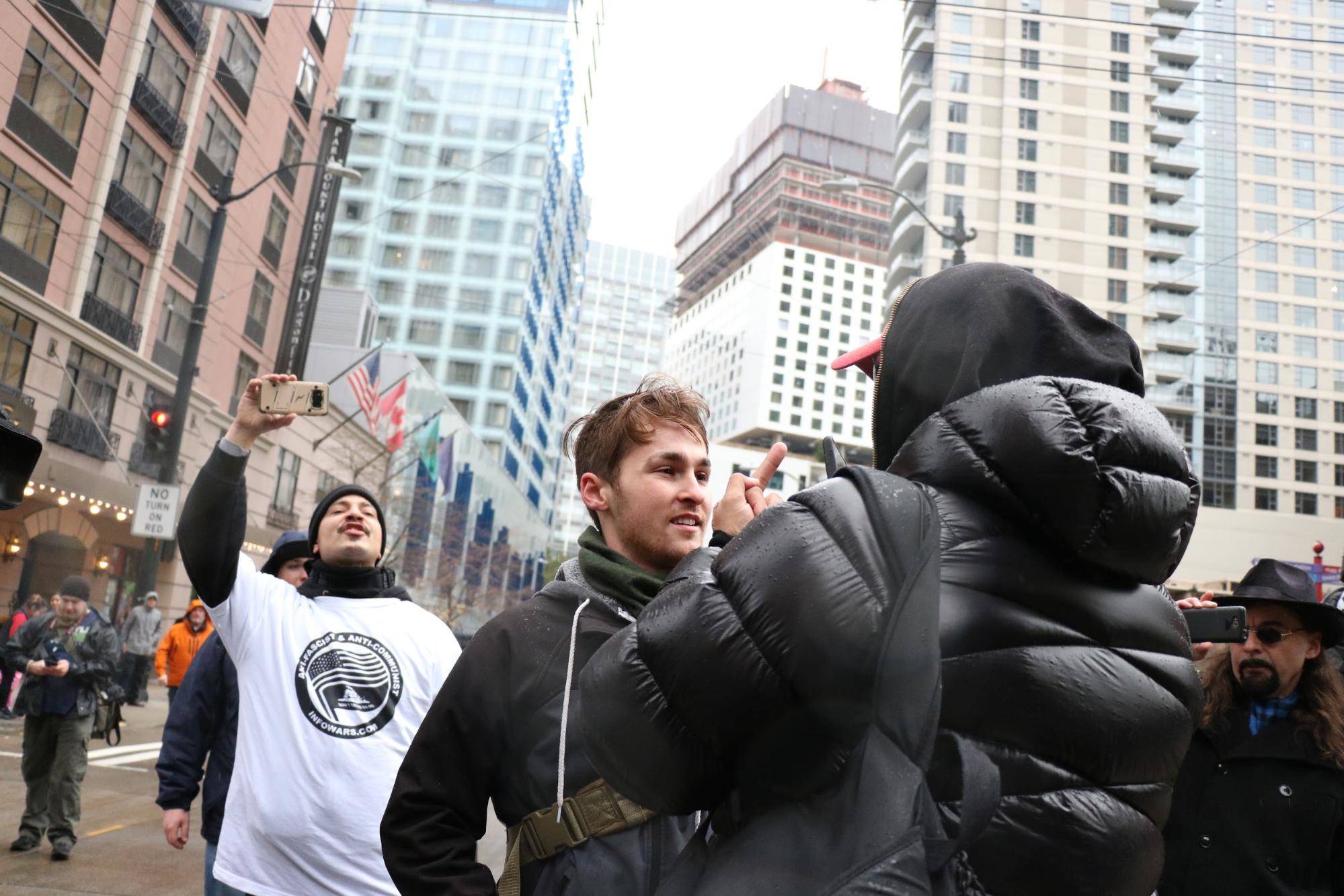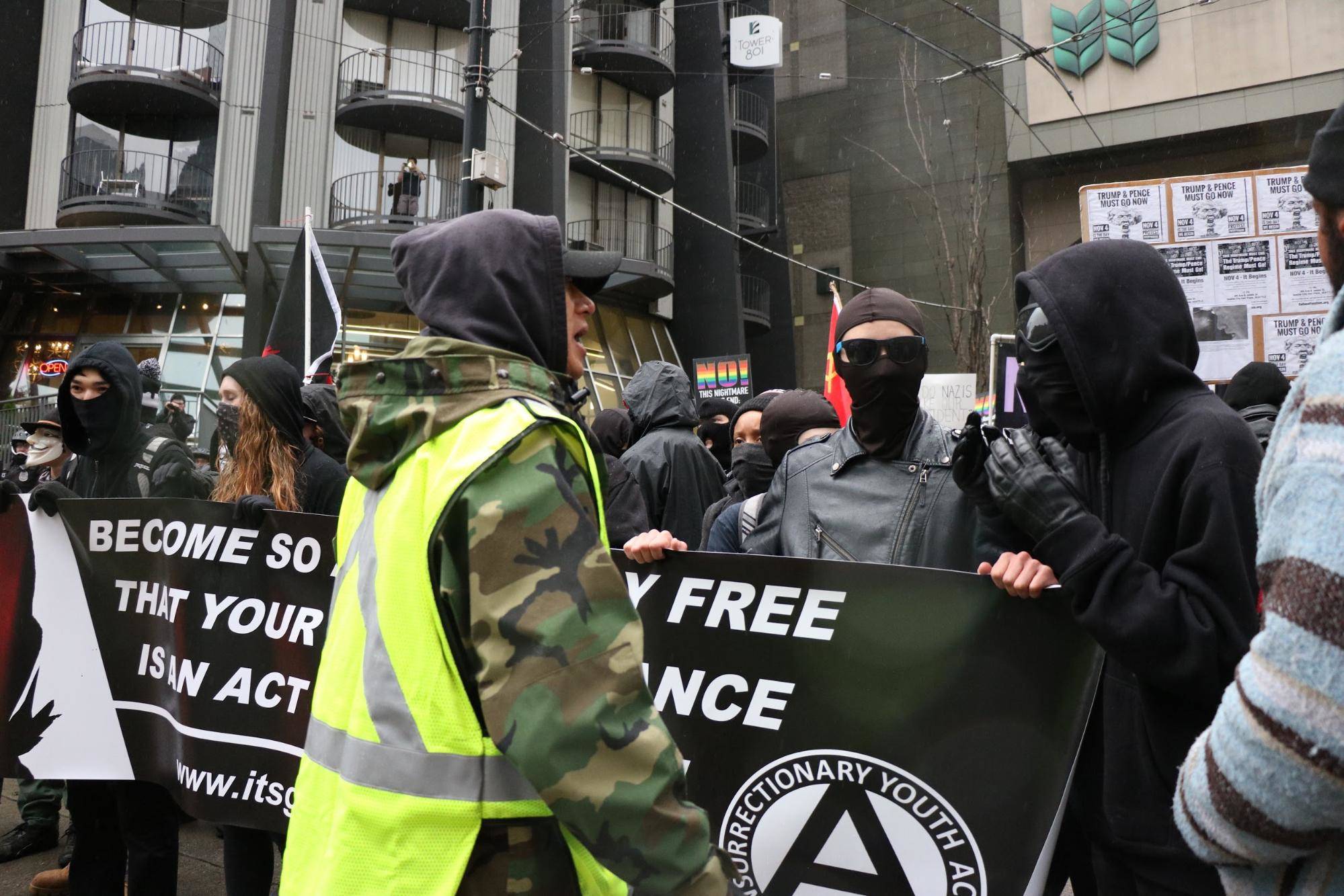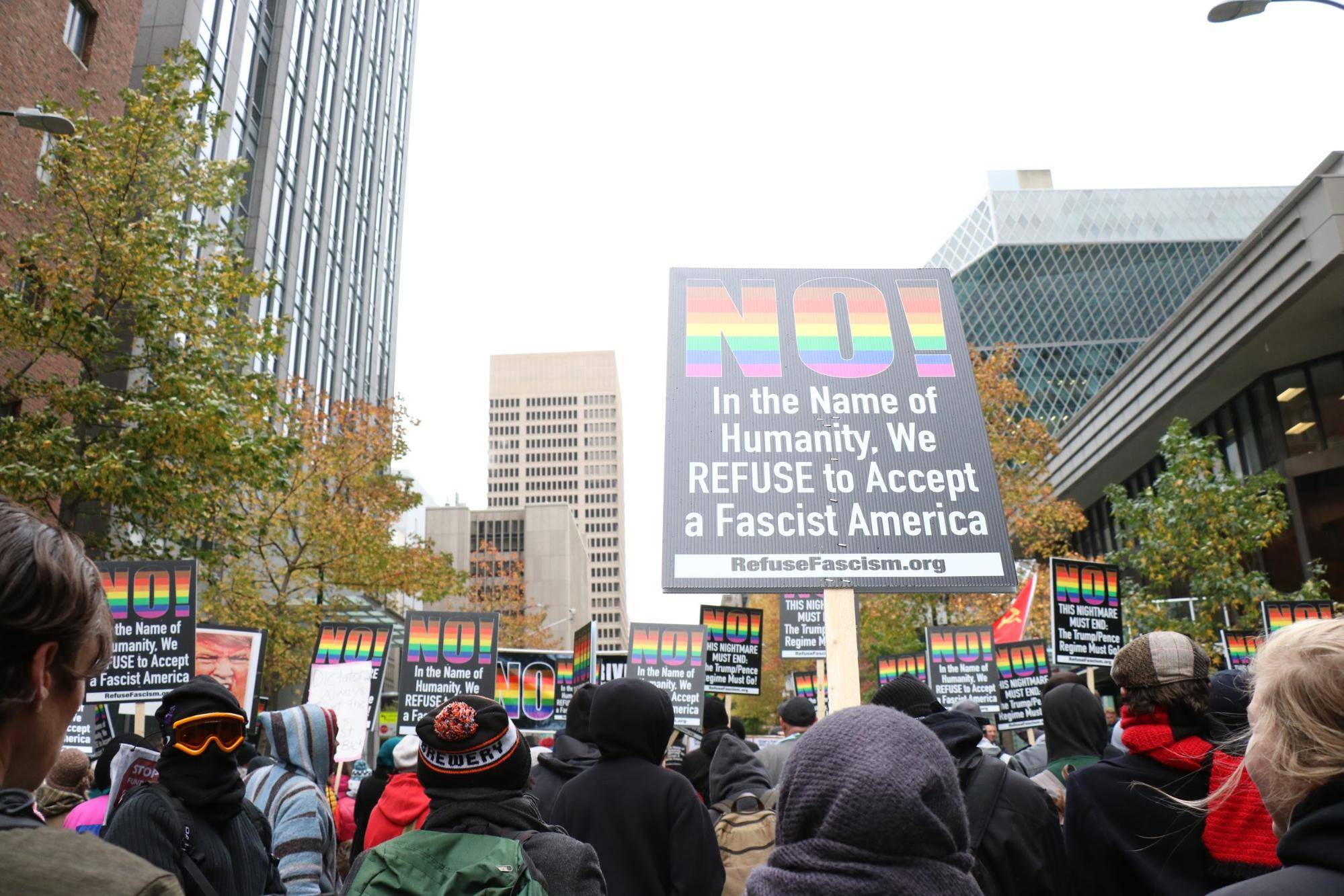It’s been a year since President Donald Trump was elected, and for those who attended Saturday’s Refuse Fascism rally in Seattle, it’s been a year too long.
Although it may seem like these kinds of protests have been going on for a while now, especially in Seattle, the national organization Refuse Fascism aimed to use Saturday’s rallies—which took place in some 22 cities across the country—as a launching pad for a much bigger movement to force the administration out of office. “It began Nov. 4,” reads a tab at the top of Refuse Fascism’s website.
But there were far fewer people out shouting this weekend than there were a year ago, and the event was hardly the launch of a civil war or the “antifa apocalypse” that the far right predicted it would be (in fact, by some accounts, Refuse Fascism is an entirely different group than the so-called antifa). At noon on Saturday, about two hundred people gathered at City Hall to listen to speeches and then march from City Hall to the Federal Courthouse, down to Pike Place Market, and back up to where they started.
The rally was peaceful, just as Refuse Fascism advertised it would be. The group had gotten an event permit through the city and had police present to clear traffic and direct the march. In addition to that, volunteers in neon vests acted as peacekeepers, and stayed toward the front where a few individuals who mocked the protesters walked.
“What’s different is that [this protest] not a one-off; it’s the launch of sustained daily protests,” said Margo Heights, a spokesperson and one of the lead organizers of the rally, referring to two more weeks of events that Refuse Fascism has planned. “It’s a time to come together. It’s a time for courage.”
Heights explained that the national organization believes the current administration is a fascist regime and that action must be taken to stop it before all civil liberties are lost. Their solution, in broad strokes, according to Heights, is to rally the people who are discontented in hopes that it will disrupt daily life and eventually result in the ousting of the Trump administration.
Posters at the rally listed what the Trump administration has done, what it has said it would do, and what the administration has “unleashed nationally.” There were posters related to the issues of immigration, civil liberties, Muslims, women, the LGBTQ community, and the environment. The Trump administration has pulled the U.S. out of the Paris climate agreement, for instance, and recently gave employers the right to deny women insurance coverage for contraception; there is the ongoing controversy over the travel ban affecting half a dozen Muslim-majority countries; and there was Trump’s decision to ban transgender people from serving in the military, a decision that, on Oct. 30, a federal judge partially blocked.
Prior to marching, there were a handful of speeches, including a keynote by Heights. She called for a demonstration akin to that of South Korea’s last year which is credited with leading to the impeachment of President Park Geun-hye. Heights also recalled Nazi Germany and warned that fascism must be stopped before it’s too late and the tools to protest it are taken away.
“People need to step out of their normal lives, ‘cause it’s not a normal situation,” Heights said, referring to the Trump administration’s actions.
The protesters skewed on the older side. Unlike last year’s post-election protests and the women’s march in January, college students were mostly absent.
For attendee Cyndy Petterson and her husband, it was their very first protest. “I should’ve done it sooner,” Petterson said. “I’m done being complacent.”
Petterson, who is almost 60 years old, said she came out Saturday because she feels fed up with the Trump administration. She feels like people are losing their rights, most importantly she feels like her rights as a woman are under threat.
Raelyne Canby, 75, remembers not being able to get a credit card or visa without her husband. Both Petterson and Canby lamented how they lived through a great deal of change for women and were not ready to lose the freedoms they worked so hard to gain.
Another attendee, Emma Jordlin, said she did not come out to protest right after the election last year—not because she didn’t care, but because she was too devastated at the time and didn’t think protesting would make any difference. Now, she does. She said she showed up on Saturday because she was especially upset by the U.S. withdrawal from the Paris climate agreement.
The marchers were led by Heights and they chanted things like “America first? Hell no! Humanity first? Hell yes!”
Last year, hundreds took to the streets after the election and inauguration. On Saturday the energy and the number of people of those previous marches was missing.
But organizers weren’t fazed. George Bakan, the owner and publisher of Seattle Gay News, one of the groups which endorsed the rally, didn’t expect a large turnout in the first place. Bakan explained what was more important was finding a core group of people to mobilize.
Heights hopes that people like Jordlin—people who’ve changed their minds about the impact of protests—keep coming out. Refuse Fascism will host events every day over the next two weeks which are all listed on their Facebook event page. Although there were not thousands of protesters like the Refuse Fascism group called for, Heights considers Saturday a success.
“It was the beginning. It was the first time that people came out to a protest to expressly say we’re launching a movement,” Heights said. “To see people united on that, it was a beautiful thing.”







